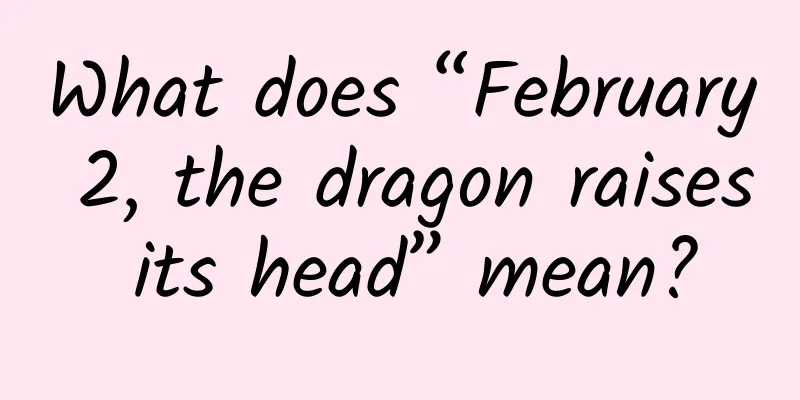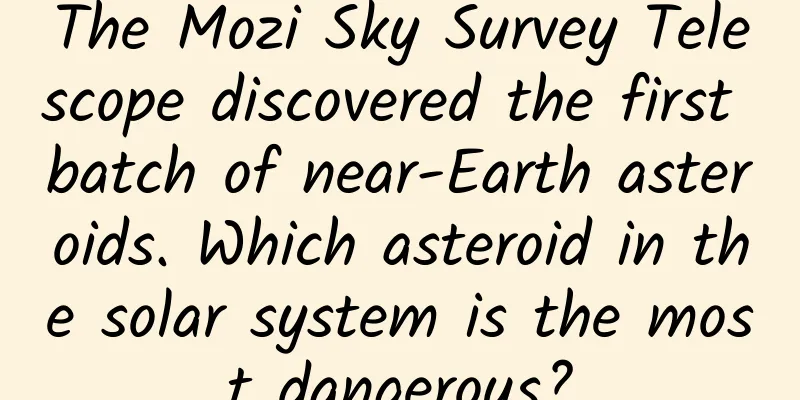What does “February 2, the dragon raises its head” mean?

|
Appointment with the Starry Sky | What does “February 2, the Dragon Raises its Head” mean? Around 21:00 on March 1, the Dragon Raises its Head will be celebrated. At that time, the dragon head of the Eastern Azure Dragon, Jiaosu, will slowly rise from the eastern horizon, like a giant dragon waking up and raising its head upward. As an important node in the celestial phenomena of Chinese festivals, "Dragon Raising its Head" has always attracted widespread attention. What does it mean? What are the rules for the timing of raising its head? What are the differences between ancient and modern times ? Astronomy experts will reveal the secrets for you. "'Dragon Raising its Head' originated from the romantic imagination of the ancient Chinese about the image of the stars in the eastern sky." Wang Kechao, director of science popularization at the Purple Mountain Observatory of the Chinese Academy of Sciences, introduced that in ancient China, the stars near the celestial equator and the ecliptic were divided into 28 mansions, which can be divided into four palaces in the east, south, west and north according to their directions, also known as the "Four Symbols", namely the Azure Dragon in the East, the Vermillion Bird in the South, the White Tiger in the West and the Black Tortoise in the North. The dragon in the "Dragon Raising its Head" celestial phenomenon refers to the Azure Dragon in the East. According to this division, each palace contains seven constellations. The Eastern Azure Dragon contains seven constellations: Jiao, Kang, Di, Fang, Xin, Wei, and Ji. In terms of shape, it looks like a giant dragon: Jiao is like the head of the dragon, Kang is like the neck, Di is like the chest, Fang is like the dragon's belly, Xin is like the dragon's body, and Wei and Ji together form the dragon's tail. "In the primitive agricultural period, the ancients determined the farming time by observing the stars. 'February 2, the Dragon Raises Its Head' reflects the astronomical phenomenon of the Jiao constellation slowly rising from the eastern horizon before and after spring ploughing. Looking up at the starry sky, the giant dragon in the sky wakes up and raises its head upwards; on the ground, people bend down to work on the land, and all things grow. " said Wang Kechao. The time of the Dragon Raising its Head is not fixed. About 2,000 years ago, people could see the Dragon Raising its Head shortly after sunset on the second day of the second lunar month. But now, the appearance time of this phenomenon has been postponed to 8 or 9 in the evening. Why is there a difference of several hours between the ancient and modern observation times? Wang Kechao explained that the Earth's axis of rotation slowly swings in space like a gyroscope. This phenomenon is called precession, and due to its existence, the time when the same star phenomenon appears is also slowly changing. Over the years, the time of "dragon raising its head" is gradually delayed due to the influence of precession. "About every 1,000 years, the time of 'raising its head' will be delayed by 1 hour." In addition, the time when the same stellar phenomenon appears in a day is also related to the early or late Gregorian calendar date. "In years with a later Gregorian calendar date, the time of 'February 2, the Dragon Raises its Head' is relatively early, and vice versa. For example, this year's February 2nd of the lunar calendar corresponds to March 1st of the Gregorian calendar, and the time when everyone sees 'Dragon Raises its Head' is around 9 pm, which is about 40 minutes later than 'February 2nd, the Dragon Raises its Head' on March 11 last year," said Wang Kechao. The "dragon raising its head" is not unique to the second day of the second lunar month. Wang Kechao pointed out that within nearly two months after the second day of the second lunar month, the public can see Jiao Su gradually rising from the eastern horizon at different times of the night. If you want to watch the entire "blue dragon" soaring in the night sky, you need to wait patiently until mid-July to mid-October of the Gregorian calendar. At that time, people look up at night and can see the seven stars forming a "giant dragon" across the sky. Source: Xinhua News Agency Reporter: Wang Jueyin, Zhu Xiao; Poster: Xu Zhan |
<<: These pains in women are really not "pretentious"!
>>: How good is AI at making up stories? It's beyond your imagination!
Recommend
Learn these 8 "head to toe" health self-test methods to teach you to check yourself in time to eliminate health risks
Many people's lives I've been a bit hecti...
The efficacy and function of argali lung
For Chinese medicinal materials such as argali lu...
What are the effects of the traditional Chinese medicine Poria
Poria is used for patients with kidney deficiency...
How was the underground world built?
On the one hand, modern architecture develops tow...
If the earth gets hotter, we may not even be able to drink beer?
Climate change is becoming more and more severe. ...
The world's thinnest pasta is born! Researchers say: It's inedible
Compiled by: Gong Zixin The world's thinnest ...
The efficacy and function of silk cotton wood
Silk-cotton wood is a medicinal material that is ...
The efficacy and function of thyme
There are so many medicinal herbs in the world, a...
Yellow rainstorm warning continues! Heavy rains are expected in parts of Guangdong, Fujian and other places. Please be careful to prevent disastrous weather.
The Central Meteorological Observatory continued ...
The efficacy and function of egg white
Egg white is a traditional Chinese medicinal mate...
Is it better to sleep with the window open or with the air conditioner on when it's hot? The doctor's answer is surprising
In the hot summer nights, the temperature is so h...
The world's first AIMS telescope breaks through the difficulty of measuring the solar magnetic field
Reporters learned from the Qinghai Lenghu Astrono...
Are primary and secondary school students addicted to "nasal energy bars"? The more they inhale, the more addicted they become?
Recently, two primary school students in Tianjin ...
Why does the peony become the "national flower" by surpassing the peony?
Although there is no final conclusion, if asked w...
In winter, besides dirt, there is also this...
Source: Youlai Healthy Life...









